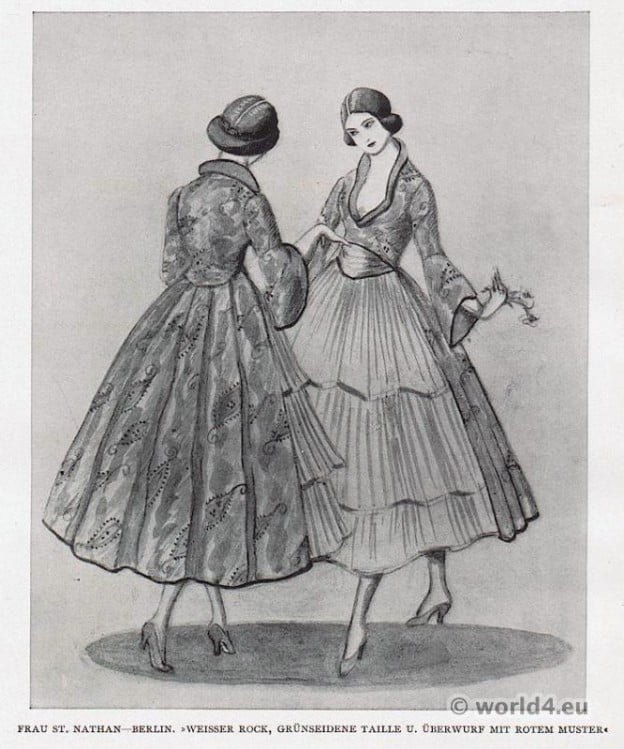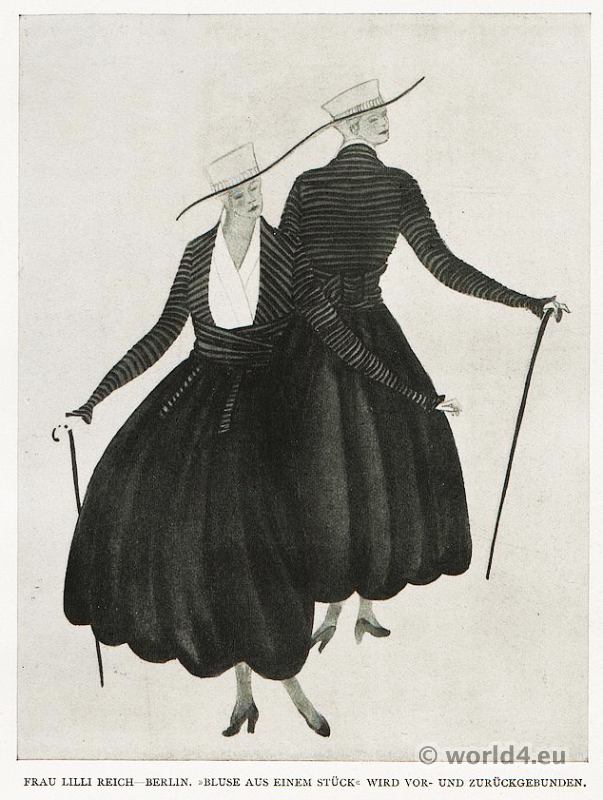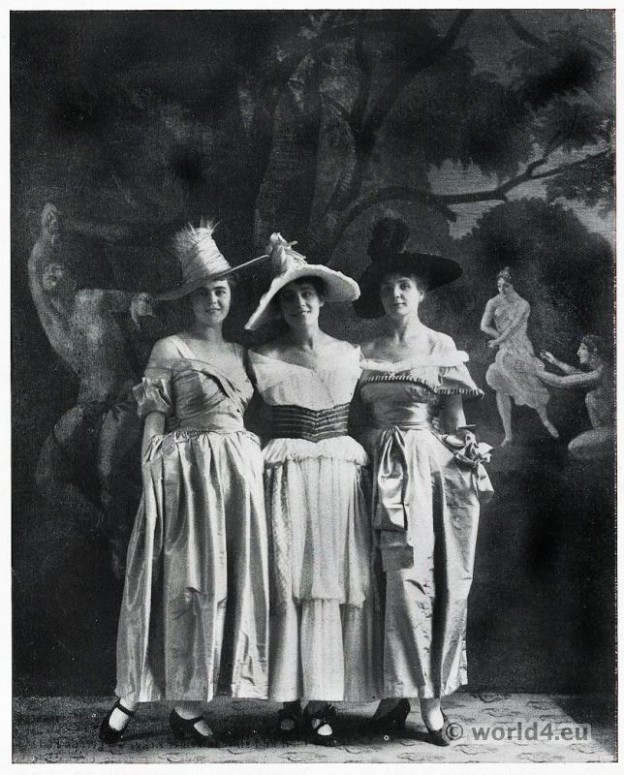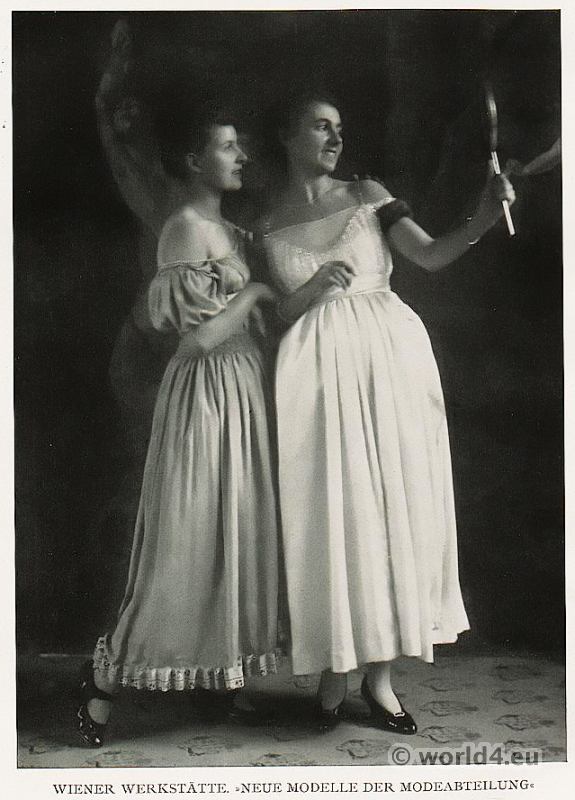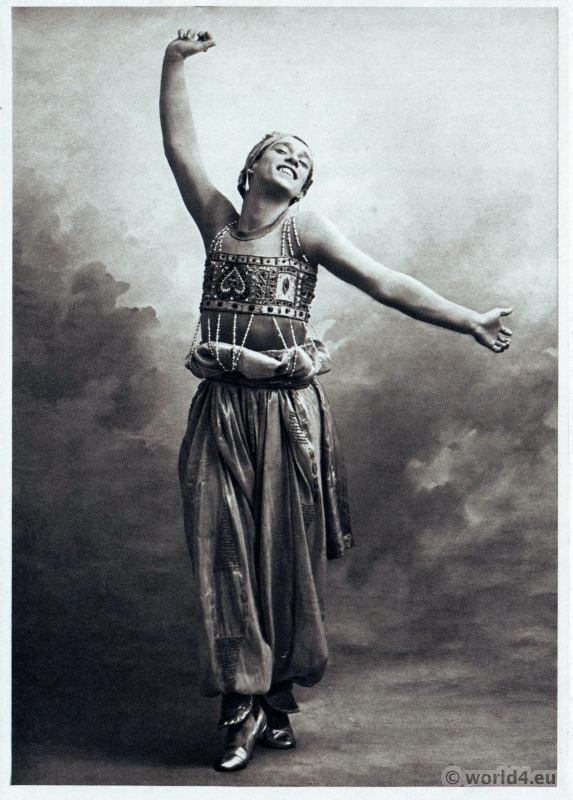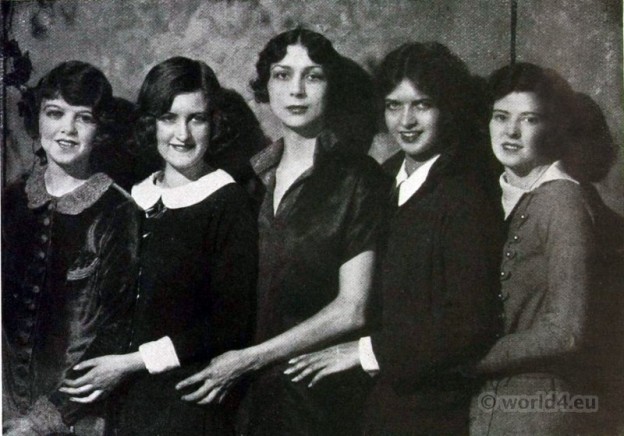House dresses by Mrs. Lilli Terstegen Munich 1917. House dresses in wool muslin and velvet jacket.
Category: 20th Century
Mrs. St. Nathan skirt fashion, Berlin 1917
Mrs. St. Nathan skirt fashion, Berlin 1917.
Lilly Reich blouse fashion, Berlin 1917.
Lilly Reich blouse fashion, Berlin 1917. Lilly Reich 1885-1945. Blouse in one piece. If tied back and front.
Theatrical costumes for Budapest. Costumes by Vienna Workshops
Theatrical costumes for Budapest. Vienna Workshops 1917
Vienna Workshops. New models of the fashion department 1917.
Vienna Workshops, Cooperative enterprise for crafts and design founded in Vienna in 1903 (Wiener Werkstätte). New models of the fashion department 1917.
Vaslav Nijinsky in Scheherazade, 1911
Russian dancer Vaslav Nijinsky (1890 – 1950) dancing in the role of the Golden Slave in ‘Scheherazade’.
Modern Dance. Alexander Sakharov and Clotilde von Derp.
Alexander Sacharoff and Clotilde von Derp regarded as one of the most famous couples in the history of dance.
The wax figures mannequins of Karl Schenker.
The wax figures mannequins of Karl Schenker photographer were shown in 2013 at the Venice Biennale. Curated by the American artist Cindy Sherman.
Jean Patou Mannequins 1925
Jean Patou Mannequins 1925. Jean Patou, 1880-1936, was a French couturier, costume designer. In 1912 he went to Paris and opened a small tailor-fashion atelier Maison Parry. His collection corresponded to… Read More
Blanche Sweet. American film actress in 1925
Blanche Sweet. American Actress. Silent movie star. Blanche Sweet 1896-1986 was an American film actress whose career in the early days of silent films had already peaked. 1909 began her film… Read More


